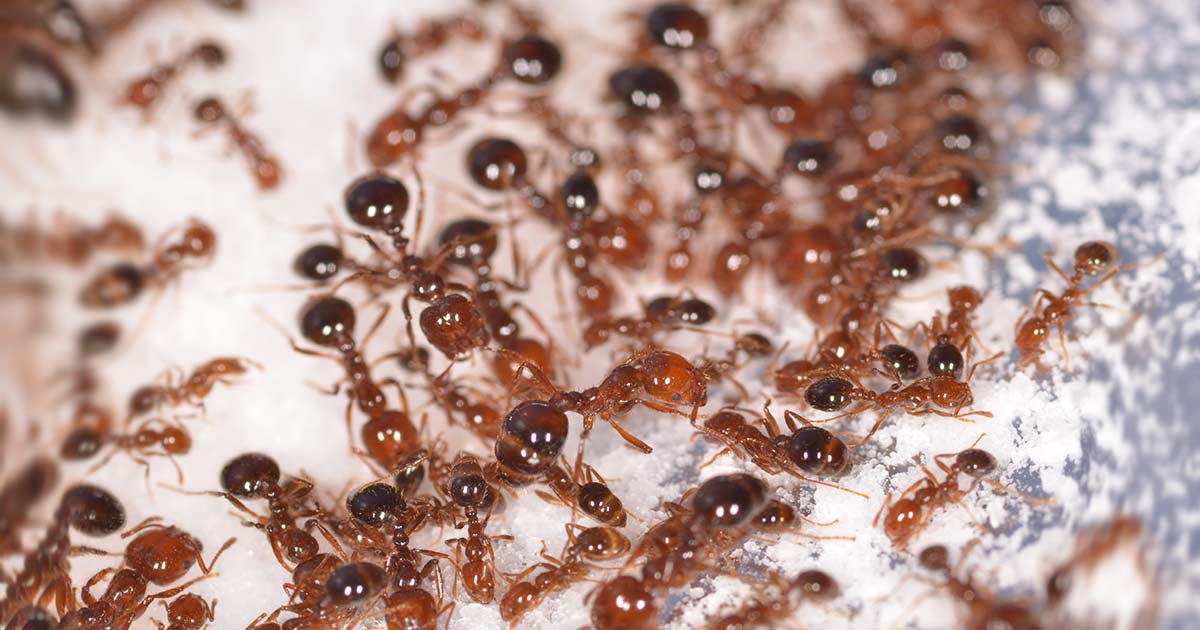How to Kill Fire Ants, Their Mounds and Queens

If you live in the southern United States, knowing how to kill fire ants is a necessary skill. But controlling fire ants takes more than killing a few foraging ants. You have to kill the mound and fire ant queen, too. Left unchecked, these aggressive invasive ants take over yards and threaten people and pets. They can even invade your home. By learning how to kill fire ants, mounds and queens, you can control fire ants and enjoy your yard.
- Why Fire Ants Need Fire Ant Killers
- Why You Have to Kill the Fire Ant Queen
- How to Control, Kill or Reduce Fire Ants
- Treat your entire yard. Some fire ant products are labeled as yard treatments, while others simply come in bigger sizes that suit large yards. The best fire ant yard treatments are simple-to-use products guaranteed to kill fire ants, mounds and queens. For granular products, a standard lawn spreader helps apply fire ant killers evenly across your lawn.
- Treat individual fire ant mounds. Some fire ant killers are labeled as mound treatments, while others are labeled for mounds and yards. Like yard treatments, both types can work, so read product labels thoroughly. The best fire ant killers for individual mounds make it simple to treat the mound and kill the queen without risking fire ant bites and stings.
Why Fire Ants Need Fire Ant Killers
Once you learn how to identify fire ants and fire ant mounds — or experience the pain of a fire ant sting — you understand fire ant hazards. Controlling these pests can be critical to your family's safety, and traditional products designed for common ants can't do the job. Effective fire ant killers target fire ants specifically and leverage how they live, forage and feed.
The mounds that pop up in your yard after a good rain are just glimpses of what lies beneath. Fire ants live in vast underground colonies. Their tunnels can extend up to 30 feet long and reach 10 feet deep. Established fire ant colonies can contain hundreds of thousands of fire ants. Some types of fire ant colonies have multiple queens.1,2
While regular ant killers may slow a few foraging ants, thousands of new fire ant workers are ready to take their place. And forget about ineffective fire ant home remedies. They can do more harm than good and leave your family and pets at risk of fire ant bites and stings. To control, kill or reduce fire ant colonies, you need fire ant killers specially designed to kill fire ants, mounds and queens.

Why You Have to Kill the Fire Ant Queen
Fire ant life revolves around protecting and feeding the queen, who keeps the colony going and growing. Worker ants defend the mounds, feed the colony, and move the queen when the mound's in danger. Fire ant queens can live more than seven years, but fire ant workers only live five weeks. Well-fed queens lay nearly 1,000 eggs a day, keeping the supply of workers — and food — constant.
As long as fire ant queens have protection and food, they don't need a mound to survive. A queen only needs six workers to start a whole new colony.1 But workers can't start new colonies without a queen.
When your fire ant killer kills the queen or stops her from reproducing, the fire ant colony dies. Worker ants die off, the food supply stops and what remains of the colony can't survive. That's why the best fire ant killers target and kill fire ant queens along with fire ants and fire ant mounds. Unless you kill the queen, the colony in your yard lives on.

How to Control, Kill or Reduce Fire Ants
By the time you see mounds, fire ants have probably been expanding their colony and excavating tunnels in your yard for quite a while. To control, kill or reduce fire ants, you need to kill ants you see and those you don't see yet.
Fire ants are most active during warm, mild weather in spring and fall. They go deeper underground when conditions are very hot or cold. Daily fire ant activity peaks in early morning and early evening, when worker ants are foraging for food. For best results, treat fire ants during these times.
Whether you choose contact killers or fire ant baits, the most thorough approach to killing fire ants involves two steps:
Because fire ants relocate frequently and quickly, keeping fire ants out of your yard is an ongoing fight. Despite your best efforts, fire ants will migrate from neighboring yards, so new mounds pop up when and where you least expect them. Proactive treatment hits fire ants before they make themselves known with unsightly mounds, bites and stings. By understanding fire ants and the best fire ant controls, you can protect your family and kill fire ants, mounds and queens.

The opinions represented in this article are the author's. However, the author has been paid by the owner of this website, Central Garden & Pet Company.
Sources:
1. Texas Imported Fire Ant Research and Management Project, "Biology," Texas A&M AgriLife Extension.
2. Ant Pests, "Fire Ant Habitat and Food Sources," Extension Foundation.




